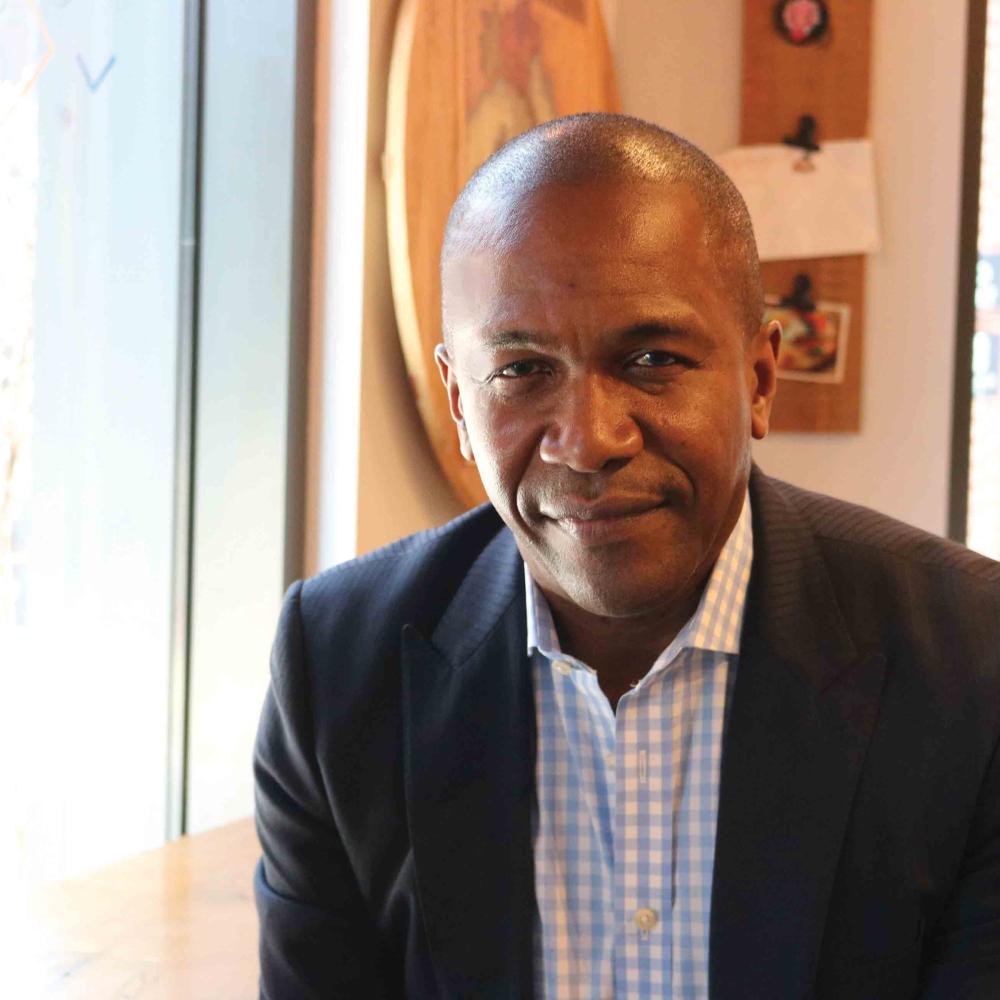Last summer, Anthony Mitchell, former director of human resources at the National Endowment for the Humanities, became the agency’s deputy chair—second only to the chair of NEH. A demanding and prestigious job, it has been held by some formidable people, but Tony, as he is called, had to be talked into it, he admits.
Before the pandemic, Mitchell was already a leader within NEH. He ran a busy human resources office for some 150 employees. He majored in business management at Hampton University, a historically black college in southeastern Virginia, before pursuing a career in the federal government. Human resources, he likes to say, is his humanities discipline. Demanding work, it requires, as he describes it, the skills of a manager and the personal touch of a therapist.
Mitchell performs other duties as assigned. At the Jefferson Lecture, the so-called “voice of God,” asking guests to please take their seats? That’s him. He also helps produce and sometimes emcee events such as the internal cultural programming done through NEH’s Special Observances Committee, a partnership with the National Endowment for the Arts.
But on March 11, 2020, around 11:30 in the morning, Mitchell assumed a new role. That very day the World Health Organization declared COVID-19 a “global pandemic.” The federal government, like most workplaces, was grappling with the idea that workers might have to avoid meeting in person.
NEH’s senior personnel were meeting in the chairman’s conference room. Under Mitchell’s direction, the discussion moved away from planning for the upcoming meeting of the National Council on the Humanities and toward planning for all NEH staff to begin teleworking as soon as possible. The agency’s first full-teleworking day, scheduled for the coming Tuesday as a mere test of the system, it became clear, would be followed by another day of full teleworking and another one after that.
Mitchell was not the only one to help set a new course for NEH in those trying months, but he was an important light in the darkness. And he seemed to be in charge of almost everything: human resources, administrative services, the transition to a new administration.
He was a key resource for the incoming chair, Shelly C. Lowe (Navajo), with whom he met regularly. One day she came to him to say she had someone in mind for the senior deputy position but wasn’t sure how to proceed because the person was a civil servant. What, she asked, would this person have to do to become a political appointee? Putting on his HR hat, Mitchell explained the steps involved, after which Chair Lowe said he, Tony, was the person she had in mind.
As he talks about his work at NEH, Mitchell repeats one word in particular, “relationships.” The key, he says, to all the positions he has held is knowing people, knowing their names, and listening to them, from the security guards on the ground floor to the division directors who manage grant lines distributing tens of millions of dollars. It helps that he loves the humanities and doesn’t mind learning all the gritty details of agency budgeting, but he is a people person at heart.
In 2022 the Project for Public Service ranked NEH as one of the best places to work in the federal government. Mitchell says it came about not only because staff believe in the mission of NEH. It also came about because of the support of the chair and the White House and the policy at NEH, during the pandemic, to prioritize the safety of its employees and the well-being of its grantees.
As he hits the road to represent NEH, spreading the message of humanities for all, Mitchell is moved by stories he hears from institutions that received stimulus funding from NEH during the pandemic. Museum directors and librarians tell him of jobs that were saved, collections that were protected, and hopes that were kept alive. There is a saying at NEH, born of institutional modesty, that there is no such thing as a humanities emergency. Mitchell has learned it is not true. There are times when even the hard-working people at a small cultural agency need to step up and do more.
Tell us more, Tony
What is your favorite historical site? Fort Washington Park. This park is literally in my backyard, and I usually run there several times a week. It’s more than 200 years old, right on the Potomac River and is so quiet first thing in the morning.
Which NEH event has been your favorite? Last year’s Jefferson Lecture featuring Andy Delbanco, it was held on the grounds of President Lincoln’s summer cottage. In addition to Delbanco’s lecture, the audience was treated to a poetry reading and musical selections.


